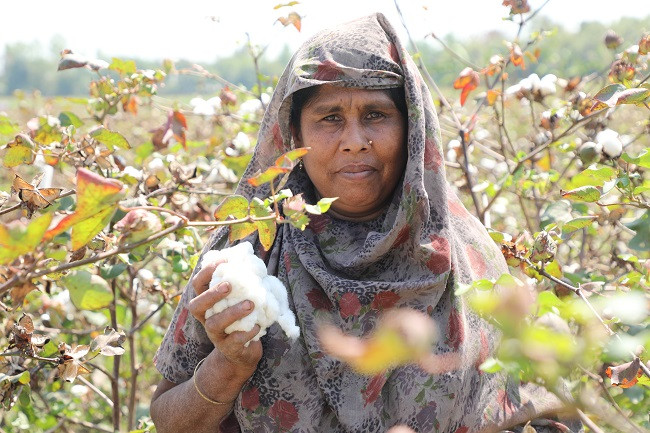As India grapples with a mounting water crisis intensified by climbing temperatures and unpredictable rainfall patterns, the nation’s cotton cultivation sector faces unprecedented challenges.
According to recent data from The Aqueduct Water Risk Atlas by the World Resources Institute, a staggering 31% of global GDP, amounting to $70 trillion, is at risk due to high water stress by 2050. India, along with Mexico, Egypt, and Turkey, is expected to bear the brunt of this crisis, contributing half of the exposed GDP.

Cotton industry that supports millions of farmers and contributes significantly to India’s GDP is under threat due to its heavy reliance on water. The lack of widespread adoption of water-saving irrigation technologies in conventional cotton farming exacerbates resource strains and contributes to environmental and agricultural concerns.
Cotton, often referred to as “white gold,” is deeply ingrained in India’s agricultural landscape. However, its cultivation places immense pressure on water resources, making it particularly vulnerable to the impacts of climate change-induced water scarcity. Traditional irrigation methods, such as flood irrigation, not only waste water but also contribute to soil erosion and water pollution, exacerbating environmental degradation.
The failure to adopt water-saving irrigation technologies in conventional cotton farming exacerbates these challenges. Drip irrigation, for example, delivers water directly to the roots of plants, minimizing wastage and maximizing efficiency. Similarly, laser land leveling ensures uniform water distribution, reducing runoff and erosion. Despite the proven benefits of these technologies, their adoption remains limited across India’s cotton belt, straining water resources and perpetuating environmental and agricultural concerns.
To address these issues, stakeholders must prioritize the widespread adoption of water-saving irrigation technologies in cotton cultivation. Government support and incentives can play a pivotal role in promoting the uptake of these technologies, making them accessible to smallholder farmers who form the backbone of the cotton industry.
Many cotton farmers in India have adopted rainwater harvesting techniques to capture and store rainwater for irrigation purposes. Rainwater harvesting helps recharge groundwater resources and reduces dependence on surface water sources, making cotton cultivation more resilient to droughts and water scarcity.
Crop rotation and diversification practices are employed to improve soil health and reduce water usage in cotton farming. Intercropping cotton with legumes or other crops helps break pest cycles, enhance nutrient availability, and reduce water stress on cotton plants.
Moreover, raising awareness among farmers about the importance of water conservation and the benefits of adopting sustainable farming practices is essential. Training programs and capacity-building initiatives can empower farmers to implement water-saving technologies effectively, enhancing both productivity and environmental sustainability.
As India confronts the dual challenges of climate change and water scarcity, the future of cotton cultivation hangs in the balance. By embracing sustainable practices and fostering collaboration between stakeholders, the nation can chart a path towards a more resilient and prosperous cotton industry, safeguarding the livelihoods of millions of farmers while preserving precious water resources for future generations.
















